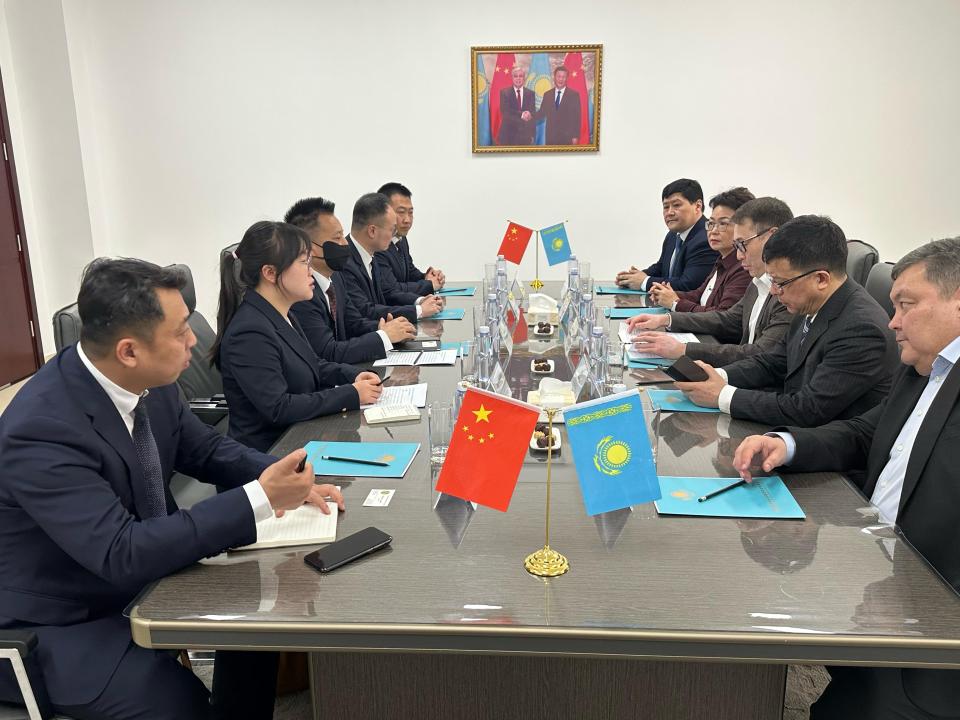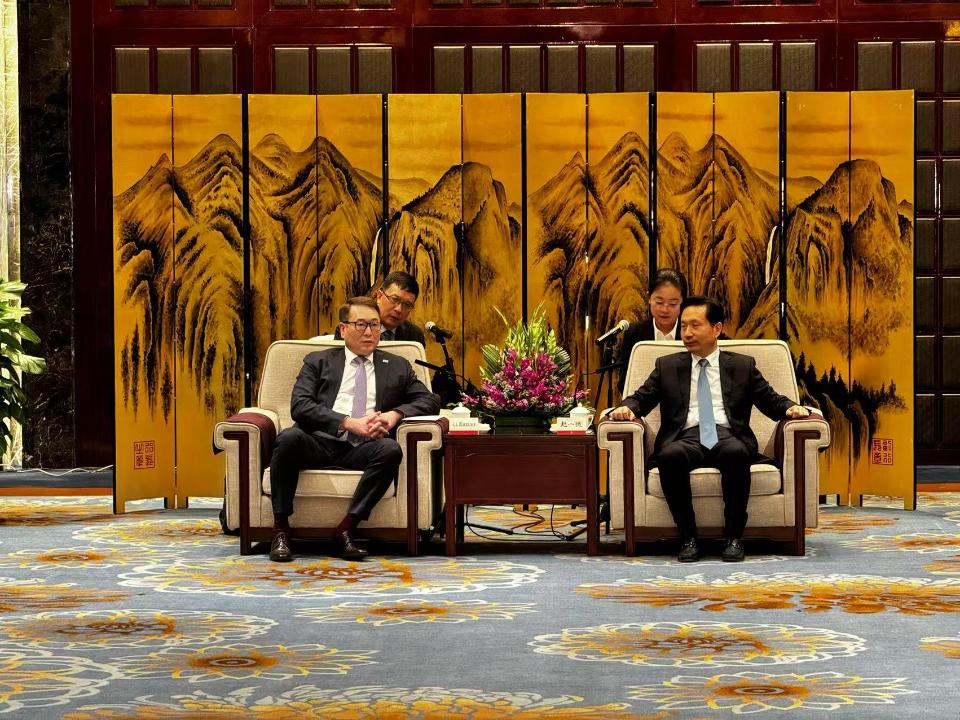April 3, 2025
Last year, the trade turnover between Kazakhstan and China increased by 6.8%, reaching $43.8 billion ahead of schedule. At the SCO summit last year, the heads of the two states set the goal of increasing this figure to $80 billion.
In 2024, mutual trade turnover between Kazakhstan and China’s Shaanxi province reached $382.3 million — 2.4 times higher than the same period the previous year ($157 million).
The visit of the Minister of Trade and Integration of the Republic of Kazakhstan, Arman Shakkaliev, as head of the business delegation to Xi’an (Shaanxi Province, China), contributed to further deepening of trade, economic, and investment cooperation with Shaanxi — a key transport and logistics hub on the export route to Southeast Asia.
On the first day of the visit, April 1, a meeting was held with Zhao Yide, Secretary of the Communist Party of China for Shaanxi Province and Chairman of the People’s Congress.
“After the SCO summit, my Chinese counterpart and I discussed how we could implement the goals and unanimously concluded that we need to change the paradigm — not only engage in simple trade, but also invest, launch joint ventures, and expand trade through regionalization,” noted Arman Shakkaliev.
As a result, last year the Minister visited seven provinces, where 3–4 major companies were identified in each region. Together with Chinese counterparts, lists of mutually traded goods, industrial cooperation opportunities, and investment projects were developed.
“In Chengdu, we increased trade turnover by over 50%, in Nanjing — by 3.5 times. I am confident that cooperation with Shaanxi will expand as well. We brought proposals for 16 types of products worth over $490 million. The 30-day visa-free regime will also boost tourism and business cooperation,” emphasized the Minister.
Both sides acknowledged growing cooperation in various sectors, including transport. Last year, nearly 300 trains were dispatched from China to Europe through Kazakhstan. In the first two months of 2025 alone, more than 111 trains were sent.
Educational and scientific cooperation is also strengthening — over 400 Kazakh students study in Chinese universities, and the branch of Northwestern Polytechnical University of China at Al-Farabi KazNU has already enrolled 56 postgraduate students.
Priority areas for future cooperation were discussed. The first is the continued development of rail freight routes between China and Europe.
“In this direction, we can expand trade in automobiles, renewable energy, and agricultural products via rail. We also see potential in expanding warehousing infrastructure abroad. The second area is agriculture,” proposed Zhao Yide.
He invited Kazakh universities to join the SCO University Alliance and the Belt and Road Alliance of Vocational Universities.
Humanitarian and cultural exchanges will also expand. This year, the first cultural tourism train from Xi’an to Almaty will be launched from Shaanxi Province, and a “Silk Road Art Festival” is planned.
The party secretary also announced that the second China–Central Asia Summit will be held in Astana in June 2025, where a Business Council meeting is also planned.
In conclusion, Minister Shakkaliev invited Chinese business representatives to attend the Export-Import Exhibition in Astana on June 11–13, held as part of the upcoming summit. So far, about 200 Chinese companies have expressed interest in participating.
Separate meetings with entrepreneurs also took place.
Miao Qian, Chairman of Shaanxi Foreign Economic and Trade Group, noted that the company ranks third in trade volume in Shaanxi. It operates across various sectors, with its core business being trade in non-ferrous metals, including cathode copper and aluminum.
“We are interested in importing natural gas and crude oil — Shaanxi’s annual demand is 3.6 million tons. We are also exploring joint EPC projects for solar and wind power plants, as well as developing logistics infrastructure for warehousing,” he said.
Meanwhile, Duan Zhiqiang, Director General of Ningxia State Farm, emphasized that his agricultural company has assets of over €400 billion. He expressed willingness to buy or jointly cultivate alfalfa and corn, as the company maintains 250,000 head of livestock and requires feed crops and fertilizers.
“Our company has over 70 years of experience in breeding dairy cattle, using smart technologies in agriculture, water distribution, and B2B feed crop cultivation,” he added.
Minister Shakkaliev noted that Kazakhstan has more than 260 million hectares of agricultural land — the third largest in the world after Australia and Canada.
“We are interested in developing agriculture through off-take contracts. You could grow and process products based on your standards and export them. Given your core focus on agriculture, we invite you to invest in Kazakhstan,” summarized the Minister.
On the second day of the visit, April 2, 2025, a trade and economic mission of Kazakhstan was held in Xi’an. Following the B2B meetings, Kazakh companies signed export contracts worth $98 million.
For the first time, the trade mission was held at the Consulate General of the Republic of Kazakhstan abroad, where a showroom of Kazakh products had been opened two years ago with the participation of the Head of State. The event brought together over 60 Kazakh entrepreneurs and more than 100 Chinese businesses.
As part of the mission, QazTrade organized an exhibition with three yurt-shaped expositions showcasing products from around 50 Kazakh companies, mainly in the food industry. Flour, oilseeds, and grains are in high demand in China and form the foundation of Kazakhstan’s strategic exports to the Chinese market, offering new prospects for domestic producers.
Following the mission, QazTrade signed cooperation agreements with the Shaanxi Committee of the China Council for the Promotion of International Trade (CCPIT) and AIJU Grain and Oil Industry Group. These agreements aim to establish direct contacts and close interaction between Kazakh and Chinese businesses under the coordination of QazTrade.






